Top 5 articles regarding technology in 2009
 Technology deals with human as well as other animal species’ usage and knowledge of tools and crafts, and how it affects a species’ ability to control and adapt to its natural environment. Among other stories we covered, in last year we wrote various articles regarding energy harvesting and transfer, nanotechnologies, material, space, medical and construction technology.
Technology deals with human as well as other animal species’ usage and knowledge of tools and crafts, and how it affects a species’ ability to control and adapt to its natural environment. Among other stories we covered, in last year we wrote various articles regarding energy harvesting and transfer, nanotechnologies, material, space, medical and construction technology.
Here are the 5 most popular articles according to our visitors:
5. Where art and technology meet – “Strandbeest”
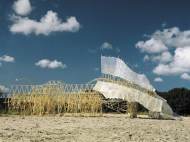 We started writing articles regarding the combination of art and technology, a theme later transformed into green architecture. The series started with a story about a Dutch artist Theo Jansen who has been working for almost 2 decades in order to create sculptures that move on their own. Each generation of his Strandbeests (beach beast) is subject to the forces of evolution, with successful forms moving forward into new designs.
We started writing articles regarding the combination of art and technology, a theme later transformed into green architecture. The series started with a story about a Dutch artist Theo Jansen who has been working for almost 2 decades in order to create sculptures that move on their own. Each generation of his Strandbeests (beach beast) is subject to the forces of evolution, with successful forms moving forward into new designs.
The creatures walk in herds on beaches, powered only by the wind. Some of them are able to capture and store the wind, then keep moving for extended times. Some even have the ability to anchor themselves in the sand when the wind threatens to blow them away – allowing the plastic-tube creatures to engage in active self-preservation.
4. Bacteriophage which produce nanoscale electronics
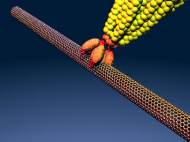 MIT researchers have shown they can genetically engineer viruses to build both the positively and negatively charged ends of a lithium-ion battery. Angela Belcher, the MIT materials scientist who led the research team said “The new virus-produced batteries have the same energy capacity and power performance as state-of-the-art rechargeable batteries being considered to power plug-in hybrid cars, and they could also be used to power a range of personal electronic devices”. The viruses are a common bacteriophage, which infect bacteria but are harmless to humans.
MIT researchers have shown they can genetically engineer viruses to build both the positively and negatively charged ends of a lithium-ion battery. Angela Belcher, the MIT materials scientist who led the research team said “The new virus-produced batteries have the same energy capacity and power performance as state-of-the-art rechargeable batteries being considered to power plug-in hybrid cars, and they could also be used to power a range of personal electronic devices”. The viruses are a common bacteriophage, which infect bacteria but are harmless to humans.
The new batteries could be manufactured with a cheap and environmentally friendly process: The synthesis takes place at and below room temperature and requires no harmful organic solvents, and the materials that go into the battery are non-toxic. Unlike traditional lithium-ion battery where lithium ions flow between a negatively charged anode (usually graphite) and the positively charged cathode (usually cobalt oxide or lithium iron phosphate) the viruses build an anode by coating themselves with cobalt oxide and gold and self-assembling to form a nanowire.
3. Nanotechnologies – Carbon nanotubes
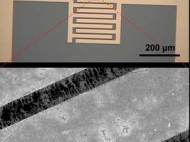 This was a rather general article regarding carbon nanotubes (CNT), written in order to be a foundation and to provide additional information to our future articles regarding CNTs. The discovery of nanotubes remains a debatable issue, especially because several scientists involved in the research could be likely candidates for the Nobel Prize. A large percentage of academic and popular literature attributes the discovery of hollow, nanometer-size tubes composed of graphitic carbon to Sumio Iijima of NEC in 1991. Carbon nanotubes have been produced and observed under a variety of conditions prior to 1991 by various scientists ever since 1952 in Soviet Union.
This was a rather general article regarding carbon nanotubes (CNT), written in order to be a foundation and to provide additional information to our future articles regarding CNTs. The discovery of nanotubes remains a debatable issue, especially because several scientists involved in the research could be likely candidates for the Nobel Prize. A large percentage of academic and popular literature attributes the discovery of hollow, nanometer-size tubes composed of graphitic carbon to Sumio Iijima of NEC in 1991. Carbon nanotubes have been produced and observed under a variety of conditions prior to 1991 by various scientists ever since 1952 in Soviet Union.
Fullerenes and carbon nanotubes are not necessarily products of high-tech laboratories; they are commonly formed in such everyday processes such as ordinary flames, produced by burning methane, ethylene, and benzene. Furthermore they have been found in soot from both indoor and outdoor air. However, naturally produced nanotubes can be highly irregular in size and quality because of the uncontrolled environment in which they are produced.
2. Increasing the wind power harnessing efficiency – VIEG
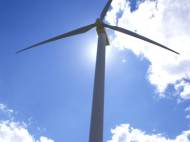 Clean, renewable energy is freely available – in the form of wind, sun, water and potential other forms we haven’t discovered yet. However, harnessing the energy with reliability and in a cost-effective manner remains a barrier. Wind power is one of the fastest growing alternative energy markets and researchers all over the world are developing wind turbines which are more efficient, reliable and resilient. In that article we wrote about the Variable Input Electrical Generator (VIEG) which is being developed by EXRO Technologies Inc, from Vancouver.
Clean, renewable energy is freely available – in the form of wind, sun, water and potential other forms we haven’t discovered yet. However, harnessing the energy with reliability and in a cost-effective manner remains a barrier. Wind power is one of the fastest growing alternative energy markets and researchers all over the world are developing wind turbines which are more efficient, reliable and resilient. In that article we wrote about the Variable Input Electrical Generator (VIEG) which is being developed by EXRO Technologies Inc, from Vancouver.
Jonathan Ritchey started its development in order to solve the losses which occur due to the inconsistency of wind speed. If the wind blows too soft, a heavy gearbox is needed to translate the slow speed of the blades into a faster speed the traditional generator is designed for. If it blows too hard, the turbine must cast away the excess energy in order to avoid damaging the gearbox and other parts of the turbine. VIEG is optimized to handle the variable input speeds common to wind power.
1. Using solar energy – Solar power
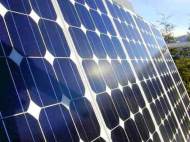 This is a rather general overview of contemporary technologies which convert solar energy into electrical power. As the article about carbon nanotubes, this article was written as a base for upcoming stories regarding solar power harnessing. As we run out of conventional fuels solar energy becomes one of the main subjects regarding our power supply thus supply of our gadgets and robots. Hence, solar power is going to be one of the subjects we’re going to cover regularly.
This is a rather general overview of contemporary technologies which convert solar energy into electrical power. As the article about carbon nanotubes, this article was written as a base for upcoming stories regarding solar power harnessing. As we run out of conventional fuels solar energy becomes one of the main subjects regarding our power supply thus supply of our gadgets and robots. Hence, solar power is going to be one of the subjects we’re going to cover regularly.
The Earth receives 174 petawatts (PW) of incoming solar radiation (insolation) at the upper atmosphere of which approximately 30% is being reflected back to space while the rest is being absorbed by clouds, oceans and land masses. The spectrum of solar light at the Earth’s surface is mostly spread across the visible and near-infrared ranges with a small part in the near-ultraviolet.









Leave your response!